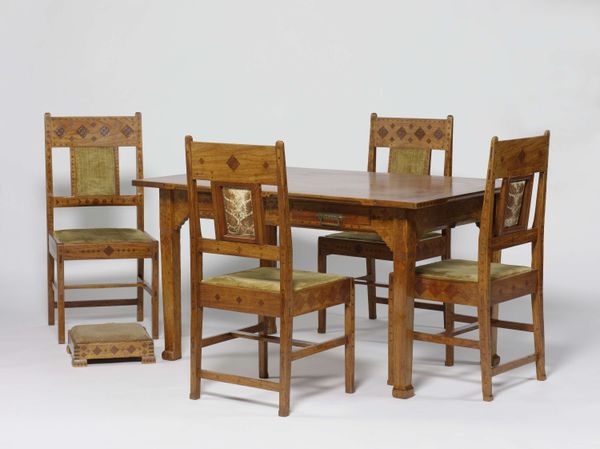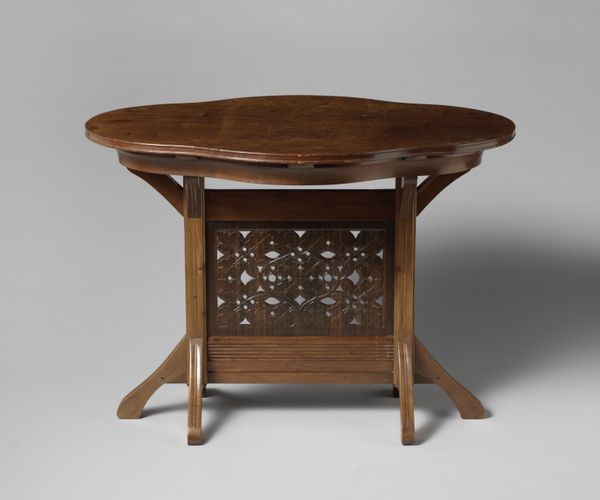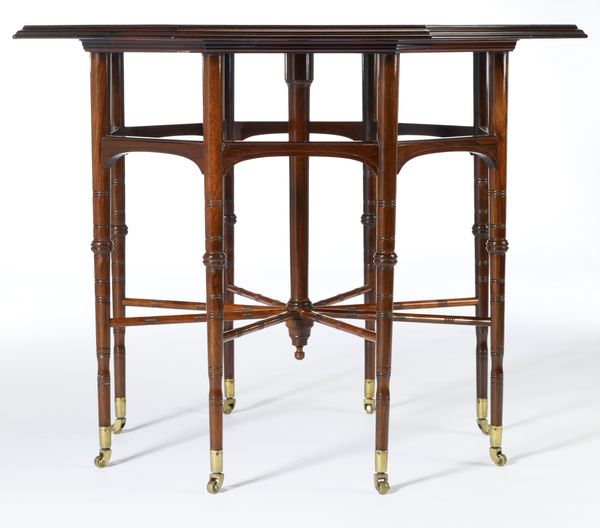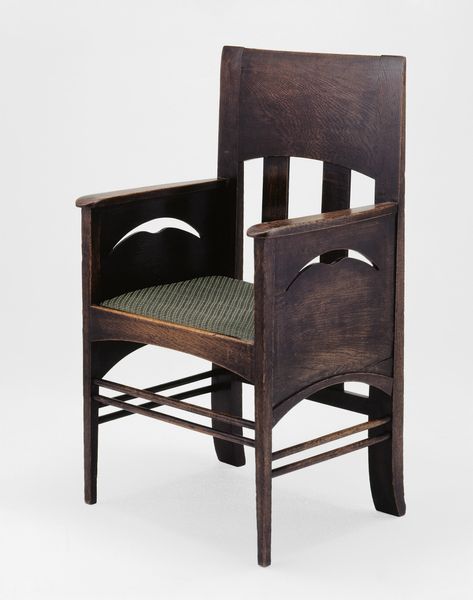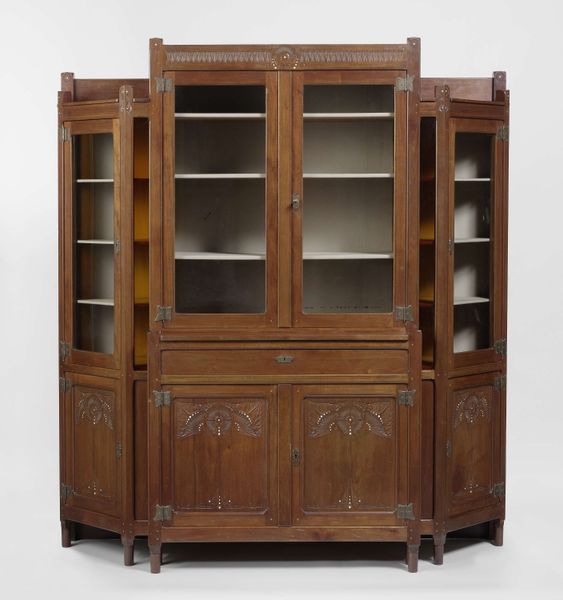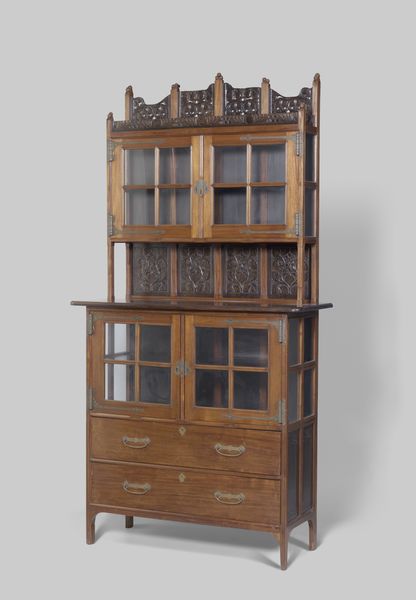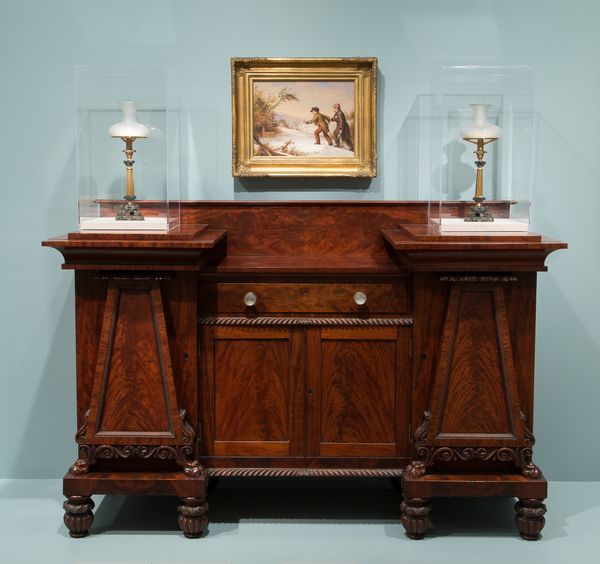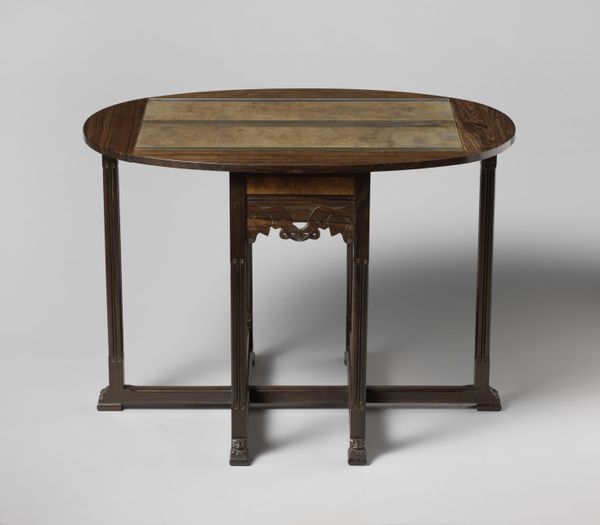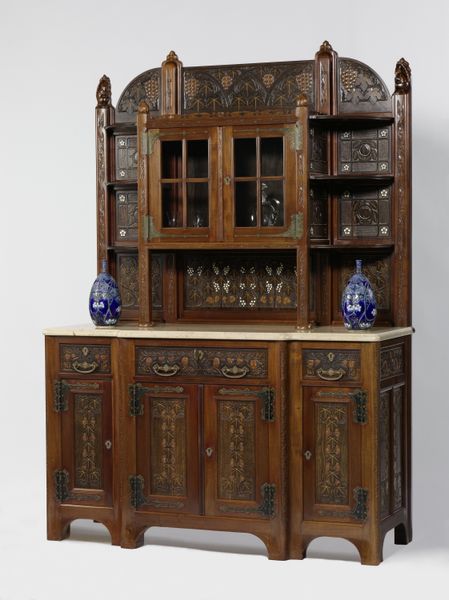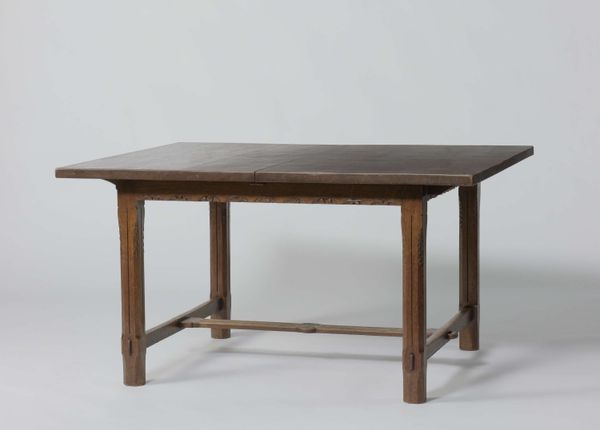
Eetkamer-ameublement bestaande uit een buffet, een tafel, een armstoel en zes stoelen met een bruin lederen bekleding c. 1901 - 1902
0:00
0:00
wood
#
arts-&-crafts-movement
#
furniture
#
traditional architecture
#
wood
#
decorative-art
Copyright: Rijks Museum: Open Domain
Curator: This striking dining set, catalogued as “Eetkamer-ameublement bestaande uit een buffet, een tafel, een armstoel en zes stoelen met een bruin lederen bekleding,” was crafted circa 1901-1902 by the firma J.B. Hillen. The ensemble comprises a buffet, a table, an armchair, and six chairs, primarily made from wood with leather upholstery. Editor: My immediate reaction is how incredibly sturdy and grounded this furniture feels. There's a certain austerity in its design; it evokes a sense of communal gathering but not necessarily luxurious indulgence. Curator: That observation is keen. Hillen was working at a time when the Arts and Crafts movement held considerable sway. This set showcases a departure from industrial production towards valuing handcraftsmanship and the integrity of materials, reflecting anxieties related to mass-produced consumer goods. The aesthetic aimed for a functional beauty rooted in ethical production. Editor: It does make me consider who this dining set was originally intended for. The leather upholstery adds a touch of refinement but the overall simplicity feels almost deliberately egalitarian. Who sat here, what discussions transpired, and how does this space shape social relationships, say along gendered lines. Curator: That's an important question to ask, placing the work within broader intersectional narratives. While its simple lines speak of function, the very inclusion of a dedicated dining room in a home signals a certain level of socio-economic privilege. And what were the social politics enacted, enabled or policed at a dinner party? Consider the division of labor, both within the household needed to upkeep such an environment and its connections to external labor systems. Editor: Yes, and it highlights the interesting contradiction embedded in many Arts and Crafts designs, no? Their professed aim for egalitarian production and aesthetic consumption remained available, in reality, mostly for the bourgeois and upper class only. Curator: Exactly, a reminder that even the most seemingly straightforward design is shaped by complex socio-economic forces. This set invites us to think not only about artistry but about the stories and politics of imagery furniture embodies in people’s lives and domestic settings. Editor: It's a compelling visual representation of design principles embedded within societal tensions. Definitely invites one to imagine lives lived around it, who benefited, who was missing, and why.
Comments
No comments
Be the first to comment and join the conversation on the ultimate creative platform.
